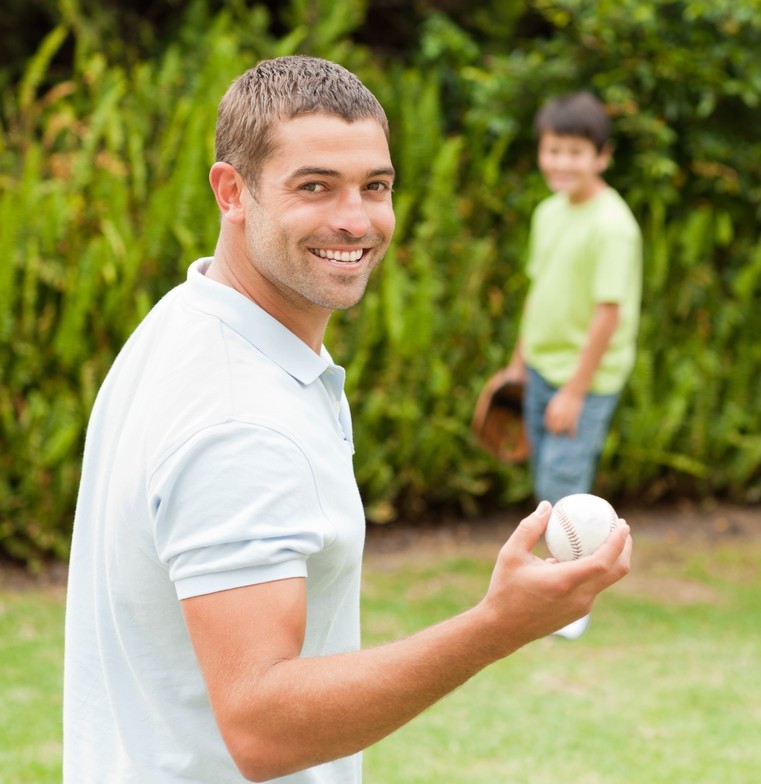
Sports Specialization: Yea or Nay?
Well-intentioned parents encourage children to pick up a sport or two to develop personal character: to learn the value of teamwork and collaboration, to develop grit and perseverance, engage and embody good sportsmanship, build self-esteem, and more. Sports activities not only provide children and students with a healthy activity to engage in for personal development but also creates an opportunity for fitness and energy. Adolescents who participate in sports activities may find them enjoyable as a healthy outlet for play.
Engaging in healthy physical exercise, such as organized sports, becomes an even more important endeavor from a health perspective. With the rise of obesity and lack of physical activity in school-aged students, particularly American high school students, encouraging the youth to engage in at least one sport has become both underutilized and imperative.
The last decade has witnessed a steady decline in youth sport participation. With the increasing rarity of young persons actively engaging in athletic leadership, it is no wonder then that parents, coaches, and others tend to be encouraging when a young athlete shows talent and dedication in a particular sport.
Sports specialization in youth is defined as engaging in a single sport for at least three seasons a year at the exclusion of other sports. Early sports specialization occurs in children under the age of 12.
Athletic specialization is inherently not a bad thing. Encouraging a student’s deep commitment to a sport can lead to several notable benefits such as recognition of college and professional coaches, the chance to attend prominent training academies, personal development of perseverance and time management, and an improvement in athletic skills and performance within a chosen sport.
However, can there be too much sport for the individual? While it is important to foster a youth’s promising talent and dedication, doing so to an extreme can have detrimental effects on the long game. Intense focus on a single sport, largely driven by parents and coaches, can lead to a young athlete developing both injury and burnout. Almost 55% of parents encourage their children to specialize in a single sport.
And if that wasn’t difficult enough, the number of hours of vigorous, repetitive, athletic activity are just as large a risk factor for injury as sport specialization, if not greater. This is especially true for female athletes who are more physically impacted by long repetitive hours devoted to sport than male athletes.
That’s not accounting for additional factors that can contribute to overuse injuries. These include poor technique, inappropriate equipment, improper training methods, poor conditioning, prior injury, and more.
It is true that any sports activity invites a chance of injury. However, the potential for injury increases as the intensity level and training volume increases. A series of studies in the Journal of Athletic Training were performed to evaluate the effects of being a specialized athlete at a young age. The results? Focusing on one sport increases the risk of major, career-threatening injury later in life.
And predictably, the type of injury accumulated from long periods of sustained, repetitive wear-and-tear on the body correlated with the sport. For example, in girl's basketball, soccer, and volleyball, specialization increased the risk of knee joint and hip injuries. In baseball, especially Little League, pitchers who specialized had a higher risk of elbow and shoulder injuries.
The strongest argument against sports specialization is the idea of building overall athleticism before honing laser-sharp athletic focus; in essence, encouraging young athletes to foundationally move well before they move more and at higher intensities. The focus is to encourage overall movement until the young athlete is developmentally ready to learn sport-specific skills, and physical maturation will grant the required strength and speed to succeed at a specific sport.
Early sports specialization also creates a lack of cross-trained foundation, inhibiting the body’s natural capacity for adaptation and leaving young aspiring athletes more prone to injury. Multiple sports builds fundamental motor skill development, which should be trained to achieve success in sports activities such as running, jumping, kicking, and throwing.
Repetition is an important part of athleticism, and one key factor that separates young athletes from mature athletes is that young athletes undergo numerous changes in a relatively small timeframe due to puberty and adolescence. Repetitive movements found in sport specialization can create microtrauma in areas that are still growing. Changes in body weight, height, and muscle mass provide additional stress to joints and connective tissue, and as young athletes grow, growth cartilage is vulnerable to the stress of repeated microtraumas. As muscle develops from repetition faster than bone, areas of musculotendinous attachment can be more susceptible to pathological injury. Such examples include Sever’s disease and Osgood-Schlatter disease, which are rarely found in adults.
Two-time NBA MVP Stephen Curry spoke on the topic of playing multiple sports at a sports panel with the junior NBA and the Positive Coaching Alliance. Curry advocates that children and adolescents should not specialize in a single sport too soon. “Because […] you might be better (than your peers) at any certain sport, you might feel comfortable in that space, and that zone. But you don’t really get to push yourself, you don’t really get to test yourself and how you deal with failure and success,” Curry said.
It is important to vary training and avoid repetitive activities that place physical stress on an athlete’s body. Many options exist while resting from a specific sport; one such example is replacing overtraining with strength and conditioning. Not only can this enhance overall health, but also provide an opportunity for injury prevention and rehabilitation, improve body composition, and increase bone health. This can also lead to better outcomes with regards to athletic performance as it avoids staleness or unexpected long-term decreases in performance without evidence of injury.
Sport diversification also enhances the mental health of a young athlete. Early specialization of one sport can lead to burnout6, which is defined as physical and emotional exhaustion from the athletic demands of a singular sport. With a decrease in performance from overtraining and the increase in the likelihood of being injured, burnout can ultimately lead to a promising athlete withdrawing or dropping out entirely.
Ultimately, sport diversification is what’s necessary to help prevent youth injuries. Playing as many sports as possible, as often as possible, creates an environment that is both physically and emotionally nurturing and productive. Sports specialization may be better utilized with structured practice once the foundations of proper movement have been placed in the aspiring young athlete.
Early involvement in sports should be encouraged. The development of gross motor skills is enhanced alongside the personal development that takes place with engaging in sports. A crossover between sports creates a positive physical, social, and mental experience that will springboard the young athlete into becoming a well-rounded elite — if he or she chooses.
References
1. Hainline, B. (2019) Early Sport Specialization: Shifting Societal Norms. Journal of Athletic Training: October, Vol. 54, No. 10, pp. 1011-1012.
2. “The growing trend of youth sports specialization.” Posted Mar 6, 2018. PR Newswire for the American Academy of Orthopedic Surgeons. Retrieved Feb 2020 from: https://www.prnewswire.com/news-releases/the-growing-trend-of-youth-sports-specialization-300608434.html
3. “The dangers of youth sport specialization and the benefits of diversification.” Posted May 20, 2019. Global Sports Development. Retrieved February 2020 from: http://globalsportsdevelopment.org/2019/05/20/specialization-vs-diversification
4. Newman, L. “Studies: Sports specialization at young age increases risk of career-threatening injury.” Posted Oct 22, 2019. USA Today High School Sports. Retrieved February 2020 from: https://usatodayhss.com/2019/jat-nata-sports-specialization-young-age-can-be-harmful
5. Caruso, T.H. (2013) Early sport specialization versus diversification in youth athletes. National Strength and Conditioning Association. December, Vol. 2, Issue 4. n.p.
6. Kutz, M, and Secrest, M. Contributing factors to overtraining in the adolescent multi-season/sport athlete. Strength and Conditioning Journal 31(3): 37-42, 2009.
7. Holt, J.B., et al. (2020) Progressive elbow magnetic resonance imaging abnormalities in Little League players are common: a 3-year longitudinal study. Am J Sports Med. 2020 Feb;48(2):466-472.
8. Interview with Stephen Curry with Stack. “Steph Curry says playing multiple sports gave him confidence to be an MVP.” Posted Feb 15, 2018. Retrieved Feb 2020 from: stack.com/a/steph-curry-says-playing-multiple-sports-gave-him-confidence-to-be-an-mvp



